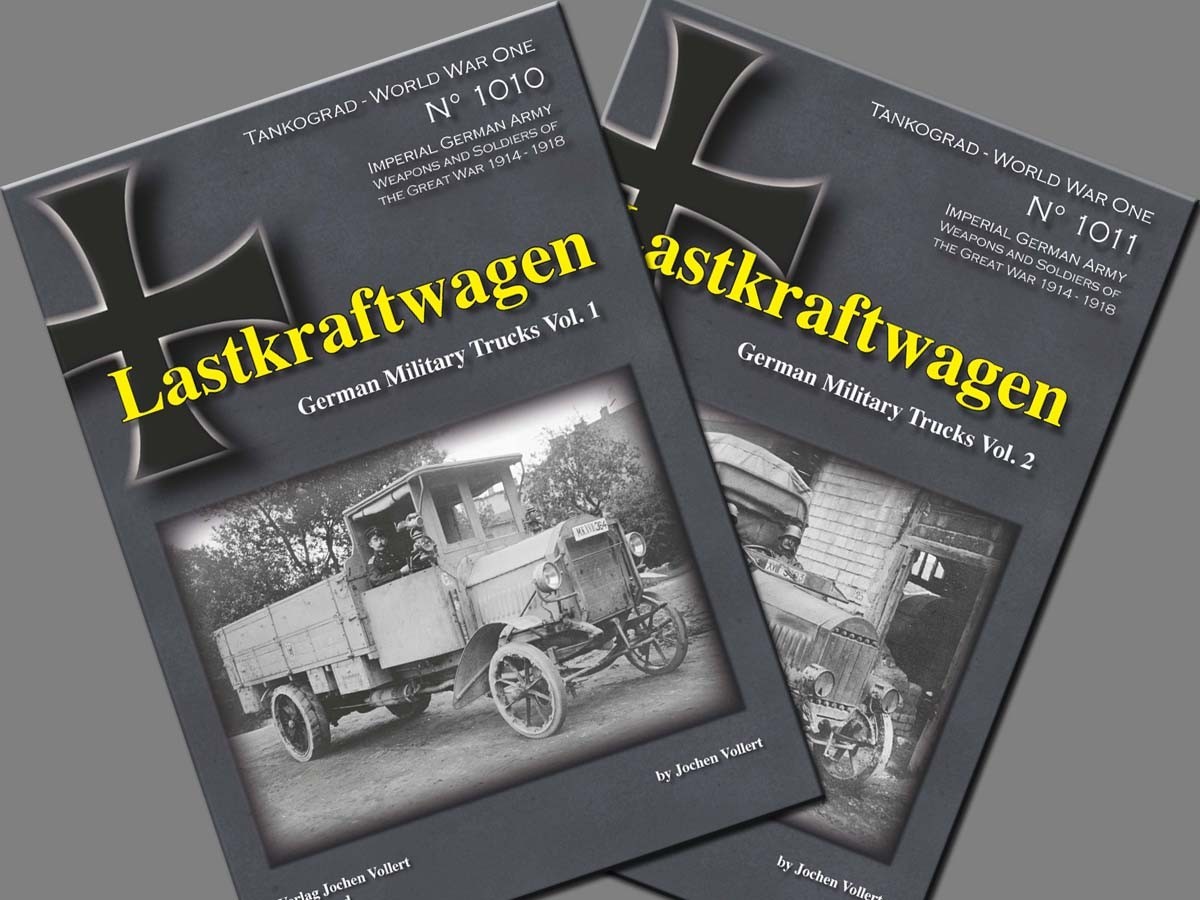
Introduction
The following introduction is as provided by Tankograd:
Motorisation of the Imperial German Army began in 1899 when the first truck and the first passenger car with internal combustion engine were tested for their military usability. The development picked up speed from 1908 when the first comparative trial runs were held to find suitable subsidy truck models for the role of Armeelastzug (truck-trailer combination). After war had broken out, the solo truck took over this role of supplying the Kaiser's troops on all frontlines.
This publication tells, for the first time ever, the story of how the Lastkraftwagen (cargo truck) became the backbone of German military supply operations in World War One. The creation and organisation of the Kraftfahrtruppe (Army Motor Transport Corps) is extensively portrayed in text, followed by richly illustrated chapters on the trucks of individual manufacturers. These include major players such as Benz, Daimler and Opel; truck-building legends such as Büssing, Horch, Mannesmann-Mulag and Stoewer - names that today have all faded into history; and also enigmatic makes such as Ageka, Komnick and Windhoff, to name just a few. Additional chapters on wartime service, as well as uniforms, complete the survey of this early era of German military motoring in hitherto unseen completeness.
Review
These two offerings from Tankograd are authored by Jochen Vollert and make a perfect pairing for those interested in this subject. The two titles run numerically one on from the other. The text is all in English which is a little unusual, but welcome aspect of these titles. The covers are made of card of a reasonable thickness and should be up to providing a good level of protection to the 192 pages that make up these two offerings. The paper used is a very good quality semi gloss paper that caught me out as I thought there were more pages initially.
These books can be considered as having four main sections to them overall:
For me the first aspect of the book looks at the German militaries strides towards motorization and away from horses, but this was never going to happen as even in the Second World War walking and horses had their place. What we do get here is a look at the roles the trucks would be used to conduct, the search for suitable vehicles for roles even specialised roles and then the combinations that were pressed into service.
The next section for me looks at the various truck designs that were pushed into service. I had no idea that so many different trucks and manufacturers were pressed into service and Tankograd has done a great job of presenting these vehicles to us. There are the adverts covering trucks manufactured and a very nice looks at the grills and badges in place. Tankograd must have a huge number of period photographs as they have provided fantastic images of the various vehicles that are also of very high quality and then topped off with very well written captions; looking through all these different vehicles says to me I would not have wanted to be responsible for obtaining, storing and then finding the parts again for all of the different vehicles.
What I consider as the third section of these books looks at the vehicles used from outside of Germany which adds a true mix to the recipe. The conditions in which these vehicles operated in is also well covered here and provides some excellent period photographs that I am sure will plant some ideas in the minds of modellers. With that thought in mind the situations some of these vehicles found themselves in will also light ideas I believe and not just for vehicles of this period as some are funny and others make you think.
Finally the uniforms worn during this period are very well covered with period photographs that show detail to a high standard. The only thing that I would like to see is a guide to the colours as well as the detail of the uniform.
Conclusion
These two books really do need to be purchased together as they are two parts of the same book and to say one part is better than the other is difficult. If you are a modeller than part two would be your best bet for a single purchase as it provides a lot of the details we seek, but to get the details on the trucks as a whole you again need both and I feel are worth the cost if the Great War holds appeal and interest for you.

